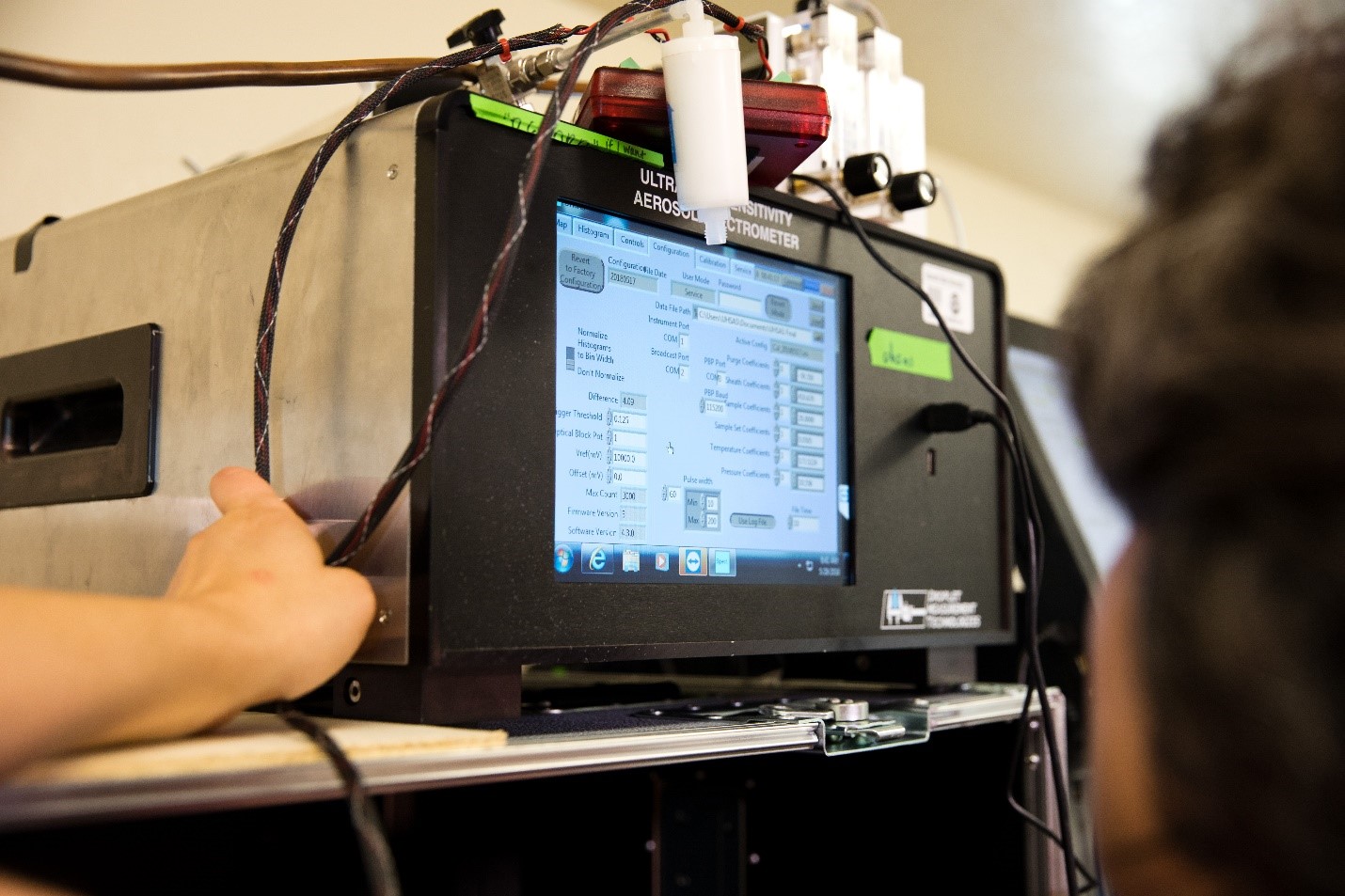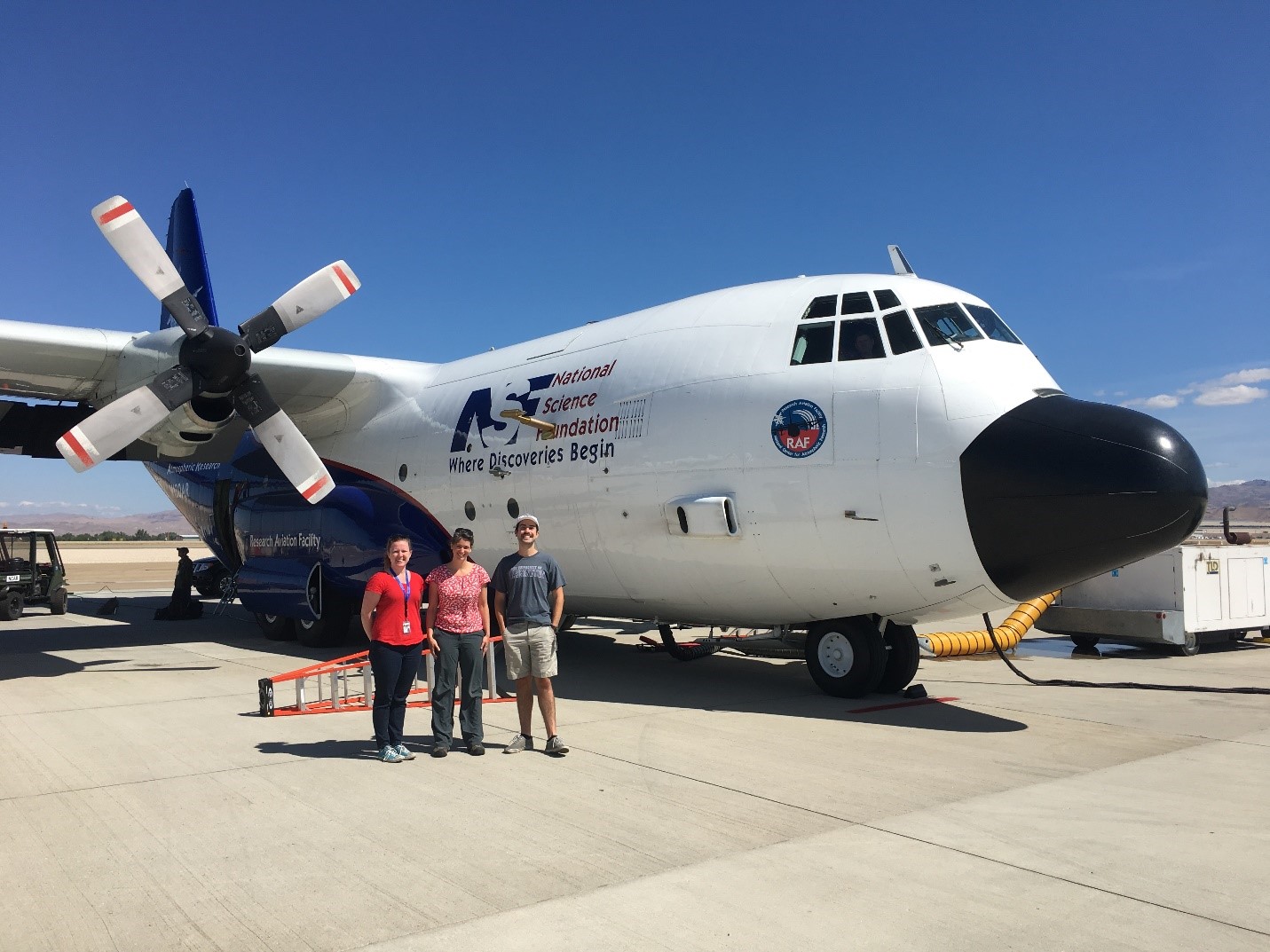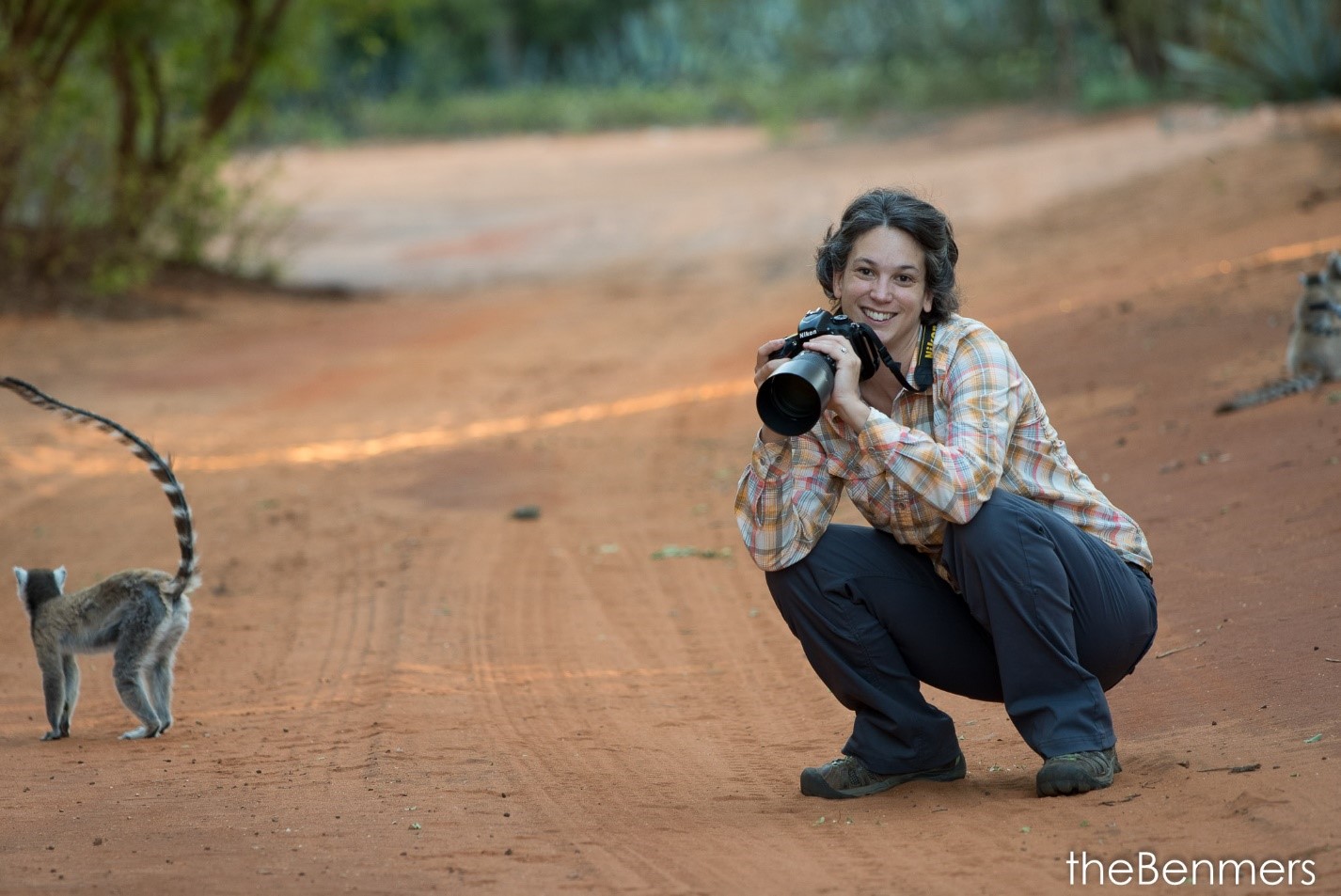
Measuring carbon particle deposition rates in regions of the world where near-permanent snow and ice is altered by soot
Were it not for an inclination to get seasick, one of the rising stars of atmospheric science today might be an oceanographer. Instead, Delphine K. Farmer is unlocking the secrets of atmospheric organic compounds.
Aerosols are small solid or liquid particles suspended in the atmosphere that reflect or absorb solar radiation. They also help form clouds.
Since 2011, Farmer has led an aerosols-research group at Colorado State University while managing a heavy teaching schedule.
Lately, some of her work focuses on how fast or slow black carbon is removed from the atmosphere. Removal rates of such particles―which come in part from wildfires, biomass burning, and fuel combustion―are hard to measure. Yet how long they remain in the atmosphere “determines how they impact climate and air quality,” she says, “and that length of time is driven by deposition.”
Studying black carbon is important to scientists. In the atmosphere, it absorbs solar radiation, influences cloud formation, and affects cloud optical properties and temperature gradients. In the cryosphere, soot from black carbon deposition alters reflectivity and speeds melting on snow and ice surfaces.
Farmer coauthored a recent paper led by graduate student Ethan W. Emerson that took on the challenge of measuring hard-to-observe wet and dry deposition of black carbon over a grassland. Wet deposition requires precipitation; dry deposition requires only moving air and gravity. Together, they are the only “sinks” for black carbon―the only ways it is removed from the atmosphere.
This work is funded by the Atmospheric System Research (ASR) program at the U.S. Department of Energy (DOE). Farmer now leads two related ASR projects, which both also rely, in part, on instruments and data from DOE’s Atmospheric Radiation Measurement (ARM) user facility.
The first project, on black carbon deposition over land surfaces (2016-2019), is currently on a one-year extension.
The second moves Farmer’s new black-carbon deposition measurement scheme into the cryosphere (2019-2022). This work is just starting.
A Twist of Fate

Broadly, Farmer’s Colorado State research group focuses on organic compounds in the atmosphere: where they come from, how long they last, and what effects they have on ecosystems at every scale. She and her researchers have measured trace gases over forests as well as the chemicals that gather indoors from cooking, appliances, and dry depositions from dust.
One recent paper from her group measured the off-site transport of herbicide applications in real time. Another paper confronted the analytical challenges of air quality chemistry indoors, where most of us spend 90 percent of our time.
A single twist of fate, perhaps, prevented Farmer from following her father into oceanography. (Research by David M. Farmer ranges from the physical oceanography of fjords to sea ice dynamics and oceanic acoustics.)
Before she was even a teenager, while growing up on Vancouver Island in British Columbia, Canada, Farmer accompanied him on brief oceanographic data forays to a local pier, aboard research ships, and to a remote logging camp.
Farmer had the heritage to be an oceanographer (her mother is a scientist too―a physician) and she had the early aptitude and appetite for math and natural history.
“I loved the idea of going out and measuring things and the world, and seeing the world,” she says―”but I get seasick easily.” So the accidental circumstance of mal de mer helped give the world an energetic practitioner of atmospheric studies.
“I always knew I wanted to do environmental science,” says Farmer. Luckily, there were other ways to get there. One was to look above, where the chemistry of the clouds and the atmosphere are intriguingly complex and challenging.
Black Carbon Deposition

Farmer is still working on her 2016-2019 ASR project, a study of the wet and dry deposition of black carbon to land surfaces.
The paper mentioned above appeared in January 2019 in the Journal of Geophysical Research, and was “a proof-of-concept,” she says. The authors demonstrated that it was possible to measure rates of black carbon deposition, which until now modelers have only been estimating. Farmer and her co-authors also showed that it was possible to create observational data sets that would inform better models.
The researchers reported that removal of black carbon by wet deposition―precipitation events―was a lot faster than dry deposition, but that it was sporadic. They also found that their dry-deposition data matched well with what modelers had been estimating.
In time, their comparison of wet and dry deposition rates―advanced by new measurement and observation techniques―will help determine what controls the removal of black carbon from the atmosphere.
A second paper, ready for publication, is on flux measurements of other atmospheric particles using the same technique. “Black carbon is not the only part of the story,” says Farmer.
Her research group is now working with global modelers to see what the new measurement technique means for predicting the radiative effects of particles and for predicting particle concentrations.
“We’re excited about that direction,” she says.
Fast Measurements
Farmer’s work for ASR depends on two primary instruments. Both employ lasers, so temperature controls are important.
The single particle soot photometer (SP2) from Droplet Measurement Technologies quantifies the mass of soot (black carbon) in individual aerosols―even in concentrations as sparse as 10 nanograms per cubic meter of measured air. The ultra-high sensitivity aerosol spectrometer (UHSAS), made by the same company, measures even the smallest aerosol particles―those that span just hundredths of a nanometer.
In the summer of 2017 at ARM’s Southern Great Plains (SGP) atmospheric observatory, Farmer’s team sited an SP2 next to a field of alfalfa. It was mounted on a tower about 2.5 meters high. A boom-like arm jutting forward was mounted with an anemometer to measure wind speed.

As dry or wet particles sifted in from the atmosphere, a tube fitted with a pump pulled air downward along the tower. At the tower’s base, the SP2 and the UHSAS made and recorded analyses in an air-conditioned box the size of a mini-refrigerator. During the experiment, Farmer compressed measurements for her experiment into one intensive six-week period.
“We modified the flow rates very carefully,” she says of the need to adjustment both instruments. “In order to get flux measurements, you have to get really fast measurements―10 every second. So any change in the flow rates can impact what you think you are measuring.”
Next: The Cryosphere
“If we can understand and model black-carbon deposition really well,” says Farmer of both her ASR projects, “we can understand particles in the atmosphere and their effect on climate and air quality.”
For the second project, the plan is to take the measurement technology field-tested at SGP into the cryosphere. Black carbon has a big impact on regions covered by snow and ice much of the year.
In February and March 2020, Farmer will take local cold-weather measurements in snowy Colorado, and perhaps add instruments that measure snowfall. After this local test of cold-weather challenges, she and her co-researchers will move the experiment to ARM’s North Slope of Alaska atmospheric observatory.
“There’s a real benefit to going out for relatively long periods of time around the world and in different environments. We’re trying to capture the variability and complexity.”
“There’s a real benefit to going out for relatively long periods of time around the world and in different environments. We’re trying to capture the variability and complexity.”
The Draw of the Natural World
When Farmer gets to Alaska in 2020 on behalf of her aerosols work, she will like the extremity and novelty and adventure of it. She will also like it for what getting outdoors adds to science.
“It’s the real world―it’s complex,” says Farmer of field work. “You can never know what process works or how something is going to change without measuring it in the natural world. You never capture the complexity of the natural world without that.”
Farmer was always drawn to the natural world, beginning in childhood with those data trips with her oceanographer father and the hiking she did in the steep temperate rainforest biome of Vancouver Island.
But she asked herself: How to be a scientist too?
As an undergraduate at McGill University in Montreal (BSc 2000), Farmer enrolled as a chemistry major. Despite an indifferent course on the subject in high school, she reasoned that chemistry and its prerequisites were the best way to move on to biology or geology.
“It was my holding pattern,” says Farmer. “Then I found I really liked it.”
The Atmosphere, Discovered
After four years in wintery Montreal, “I only applied to graduate schools in California,” says Farmer.
Hence the draw of the University of California, Berkeley (MS environmental science 2001, PhD chemistry, 2006). At first, Farmer joined a program that focused on soil and biogeochemistry and ecology in tropical forests. “But I wanted to use more sophisticated chemistry techniques and really think about chemical reactions that were fast,” says Farmer.
So the next year she moved to a group in the chemistry department led by atmospheric chemist Ronald Cohen, who went on to become her mentor and dissertation advisor.
Studying chemistry over the mountains involved flux measurements and measuring depositions and the emissions of reactive trace gases. Farmer did laser spectrometry there, in all seasons, and soon seized on “one of the really interesting implications―that all of this chemistry and these interactions would impact aerosols,” she says.
Further Afield

By 2006, Farmer was in Tecámac on the outskirts of Mexico City, downwind of the urban plume, taking air-quality measurements for the National Science Foundation’s Megacity Initiative Local and Global Research Observations (MILAGRO) field campaign. It was her first large-scale field experience.
Two years later, Farmer was a National Oceanic and Atmospheric Administration Climate & Global Change postdoctoral fellow at the University of Colorado, Boulder, where she worked with aerosol expert and atmospheric chemist Jose-Luis Jimenez. The post was a launching pad to the 2008 Amazonian Aerosol Characterization Experiment (AMAZE-08).
For Farmer it was “the most exciting six weeks.” The experience included a metal observation tower poking high into the tropical canopy, howler monkeys, snakes, bugs the size of hot dogs, and bunking in open-sided rooms slung with sleeping hammocks.
“There’s a real benefit to going out for relatively long periods of time around the world and in different environments,” says Farmer. “We’re trying to capture the variability and complexity.”
Outside of work, with camera in hand as a nature photographer, she travels widely to (sometimes) wild places with her husband, software engineer David Benson. So far, that includes trips to Cambodia, Vietnam, Kenya, Botswana, Tanzania, Madagascar, Morocco, Costa Rica, and Ecuador.
As with science, says Farmer, “I’m constantly surprised at what I see.”
# # #
This work was supported by the U.S. Department of Energy’s Office of Science, Office of Biological and Environmental Research as part of the Atmospheric System Research Program.

